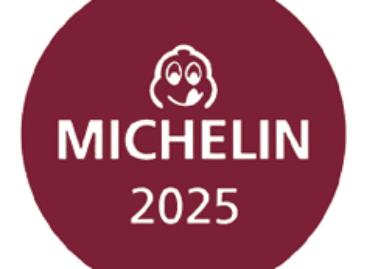Magazin: Trends and innovations at the 50th SIAL
About 6,300 exhibitors from 105 countries presented the latest food and consumption trends and innovations to 150,000 visitors at the 50th SIAL trade show in Paris. Statistics show that 71 percent of visitors went to stands where they could discuss new products and find new suppliers.
 Trade Magazin represented Hungary in the 28-member jury of the World Tour by SIAL innovation competition. In the spring round of the competition our magazine gave a presentation on the characteristics and trends of the Hungarian market. After the second round in October the winner was revealed at SIAL Paris: the Austrian entry, MAGGI papyrus cooking paper was voted the most innovative product in the World Tour by SIAL. Many research results were also introduced at the trade show. One of these was conducted by XTC World Innovation: they found that companies’ innovation activities answer 12 consumer trends, which can be classified into two opposing groups of 6 trends, which at the same time also complement each other. The trends are called: 1. thrift and control, 3. the diet that protects, 5. wild and alive, 7. helping the consumer, 9. local and citizen-led, 11. controlling time – 2. everyday treats, 4. letting go, 6. essential and industrial, 8. the gifted consumer, 10. global exoticism, 12. food 2.0. To understand the 12 trends better, XTC drew a trends tree with 5 groups of consumer expectations, which are: 1. pleasure, 2. health, 3. physical, 4. convenience, 5. ethics. Researchers say that manufacturers need to understand the mechanism of these groups and their interaction, and innovate accordingly. Based on current trends, SIAL and XTC World Innovation drew many conclusions about what will shape the FMCG scene in the next decades. Economic recession taught people that many products can be produced at home and many people learned to cook in the last few years. This trend will continue and consumers will have small herb gardens on the balcony or even keep chickens there. It is very likely that we won’t be baking but printing our pizza, as the technology of 3D food printing is spreading fast. Ingredients will come in cartridges and the 3D printer can put them on each other, layer after layer. Two of the technology’ further advantages: it produces little waste and food made this ways has long shelf life. NASA commissioned Systems & Materials Research Corporation (SMRC) with developing the technology and one of the company’s engineers, Anjan Contractor is of the opinion that 3D food printing can also help solving the problem of malnourishment and famine worldwide. Making food will become child’s play using modern kitchen technology, but this doesn’t mean that the importance of culinary enjoyment and artistic value will reduce. On the contrary, food will be able to communicate emotions more and more, and in the future we will be recording and sharing our food-related experiences routinely. David Edwards, a professor at the American Museum of Natural History invented oPhone, a special phone that lets users tag images with scents and send them. Just imagine the opportunities created by this device: we can send scents from a wine tasting or a when drinking a nice cup of coffee. Until the device becomes accessible to everyone, free iPhone app oSnap can be used to send images paired with any of the 300,000 different scents available. Nimesha Ranasinghe, a scientist at the National University of Singapore developed a taste and temperature simulator, which makes it possible to taste food we see on the screen by reproducing the four main taste components through electrodes. SIAL’s experts opine that children who are born in 2014 may live to be 100 or 120 years old. This entails new challenges for the food industry: in about 50 years time the biggest task might be maintaining good eyesight and good memory and superfoods will play an important role in this. Biologists and dietitians will have to find those fruit and vegetable hybrids and other foods which can make people healthier, resistant to illnesses and youthful.
Trade Magazin represented Hungary in the 28-member jury of the World Tour by SIAL innovation competition. In the spring round of the competition our magazine gave a presentation on the characteristics and trends of the Hungarian market. After the second round in October the winner was revealed at SIAL Paris: the Austrian entry, MAGGI papyrus cooking paper was voted the most innovative product in the World Tour by SIAL. Many research results were also introduced at the trade show. One of these was conducted by XTC World Innovation: they found that companies’ innovation activities answer 12 consumer trends, which can be classified into two opposing groups of 6 trends, which at the same time also complement each other. The trends are called: 1. thrift and control, 3. the diet that protects, 5. wild and alive, 7. helping the consumer, 9. local and citizen-led, 11. controlling time – 2. everyday treats, 4. letting go, 6. essential and industrial, 8. the gifted consumer, 10. global exoticism, 12. food 2.0. To understand the 12 trends better, XTC drew a trends tree with 5 groups of consumer expectations, which are: 1. pleasure, 2. health, 3. physical, 4. convenience, 5. ethics. Researchers say that manufacturers need to understand the mechanism of these groups and their interaction, and innovate accordingly. Based on current trends, SIAL and XTC World Innovation drew many conclusions about what will shape the FMCG scene in the next decades. Economic recession taught people that many products can be produced at home and many people learned to cook in the last few years. This trend will continue and consumers will have small herb gardens on the balcony or even keep chickens there. It is very likely that we won’t be baking but printing our pizza, as the technology of 3D food printing is spreading fast. Ingredients will come in cartridges and the 3D printer can put them on each other, layer after layer. Two of the technology’ further advantages: it produces little waste and food made this ways has long shelf life. NASA commissioned Systems & Materials Research Corporation (SMRC) with developing the technology and one of the company’s engineers, Anjan Contractor is of the opinion that 3D food printing can also help solving the problem of malnourishment and famine worldwide. Making food will become child’s play using modern kitchen technology, but this doesn’t mean that the importance of culinary enjoyment and artistic value will reduce. On the contrary, food will be able to communicate emotions more and more, and in the future we will be recording and sharing our food-related experiences routinely. David Edwards, a professor at the American Museum of Natural History invented oPhone, a special phone that lets users tag images with scents and send them. Just imagine the opportunities created by this device: we can send scents from a wine tasting or a when drinking a nice cup of coffee. Until the device becomes accessible to everyone, free iPhone app oSnap can be used to send images paired with any of the 300,000 different scents available. Nimesha Ranasinghe, a scientist at the National University of Singapore developed a taste and temperature simulator, which makes it possible to taste food we see on the screen by reproducing the four main taste components through electrodes. SIAL’s experts opine that children who are born in 2014 may live to be 100 or 120 years old. This entails new challenges for the food industry: in about 50 years time the biggest task might be maintaining good eyesight and good memory and superfoods will play an important role in this. Biologists and dietitians will have to find those fruit and vegetable hybrids and other foods which can make people healthier, resistant to illnesses and youthful.
Related news
Related news
Ice cream as a season-extending product
🎧 Hallgasd a cikket: Lejátszás Szünet Folytatás Leállítás Nyelv: Auto…
Read more >The stars were shining bright
🎧 Hallgasd a cikket: Lejátszás Szünet Folytatás Leállítás Nyelv: Auto…
Read more >(HU) Egy egészen hatékony kempingfőző – A nap videója
🎧 Hallgasd a cikket: Lejátszás Szünet Folytatás Leállítás Nyelv: Auto…
Read more >



